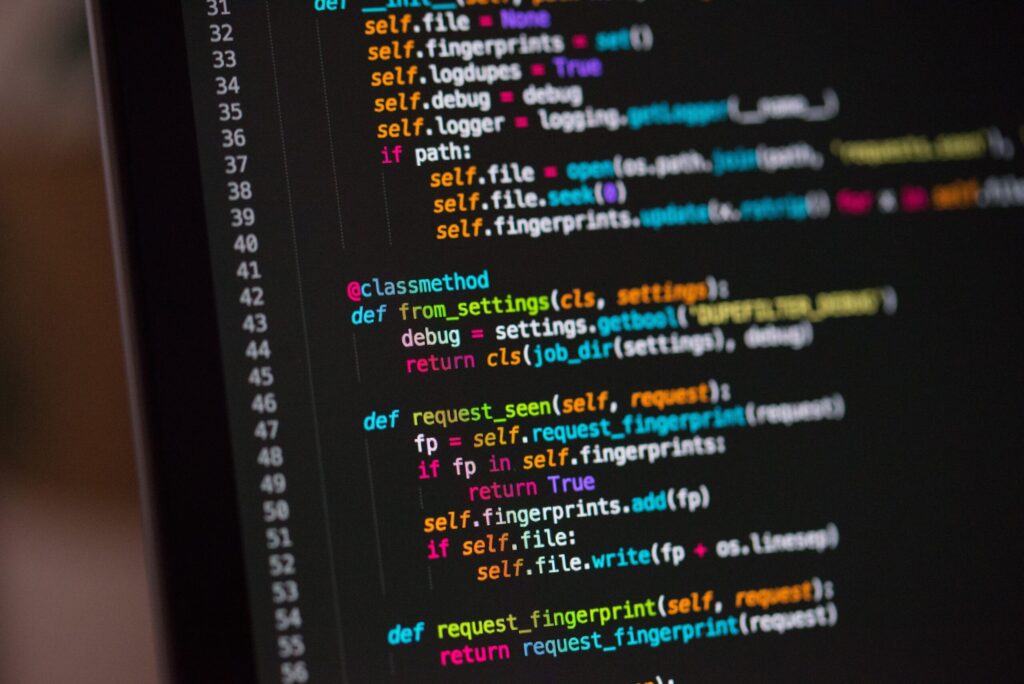Introduction
In the evolving world of cybersecurity, digital fingerprints—often known as cryptographic hashes—play a pivotal role in verifying data integrity, protecting information, and enabling secure online transactions. One such cryptographic hash is a0deb33d5b6c59da2a370840df058c6b. While it might look like a random string of alphanumeric characters, this hash value represents far more than just a digital artifact. It stands as a core element in cryptographic algorithms used to validate, protect, and authenticate information across digital platforms.
Hash values like a0deb33d5b6c59da2a370840df058c6b are typically produced by a hashing algorithm—such as MD5, SHA-1, or SHA-256—that compresses data into a fixed-size string. Despite minor changes in input data, the resulting hash will change significantly, acting as a unique identifier or “digital fingerprint.” This specific hash, a0deb33d5b6c59da2a370840df058c6b, can be associated with a file, password, transaction, or other types of digital data to ensure it has not been altered.
In today’s interconnected world, where data is shared, stored, and accessed across various platforms, ensuring data authenticity is more important than ever. That’s where cryptographic hashes come in. They’re at the heart of digital security systems, from password encryption to blockchain validation and software integrity checks. In this article, we’ll dive deep into the significance of the hash a0deb33d5b6c59da2a370840df058c6b, its use cases, and why understanding it matters for anyone working with or relying on secure digital systems.
What Is a0deb33d5b6c59da2a370840df058c6b?
The value a0deb33d5b6c59da2a370840df058c6b is most likely a hash generated by a cryptographic algorithm such as MD5. A hash like this represents a unique output derived from an input string of data. No matter the length or complexity of the input, the output is always the same fixed length—in MD5’s case, a 128-bit value typically represented in hexadecimal format. This allows for easy comparison, validation, and identification of digital content without revealing the original input data.
When you see a hash like a0deb33d5b6c59da2a370840df058c6b, it’s not meant to be interpreted directly by humans. Instead, it’s a verification tool. For example, when downloading software from a trusted site, you may see a hash value provided. After downloading, users can run a hash function on the downloaded file; if the resulting hash matches the given value, like a0deb33d5b6c59da2a370840df058c6b, they know the file hasn’t been tampered with or corrupted during transmission.
From a technical standpoint, hashes like this one are irreversible—meaning you cannot work backward from the hash to retrieve the original data. This one-way nature is what makes cryptographic hashes vital in cybersecurity. Whether used in database indexing, password storage, or digital signatures, the security behind a hash such as a0deb33d5b6c59da2a370840df058c6b lies in its complexity and collision resistance—the difficulty of finding two different inputs that generate the same hash.
The Role of Cryptographic Hashes in Data Integrity
Cryptographic hashes like a0deb33d5b6c59da2a370840df058c6b play a central role in maintaining data integrity. When data is transferred over networks or stored in digital formats, it’s susceptible to corruption or tampering. A hash provides a fingerprint of the original data. If any part of the data changes, the resulting hash will be different, alerting users to potential compromise.
This functionality is critical in a variety of real-world applications. For instance, during email transmission, a message digest can be attached to the email. Upon receipt, the system checks the digest against the computed hash of the received message. If the hashes match, the email has arrived unaltered. The hash a0deb33d5b6c59da2a370840df058c6b could represent such a digest in a secure email verification process.
The importance of data integrity extends into cloud computing, file storage, and even legal records. With the rise of tampering and cyber threats, organizations increasingly rely on hashes to validate software updates, confirm the authenticity of digital signatures, and protect critical infrastructure. Simply put, cryptographic hashes like a0deb33d5b6c59da2a370840df058c6b are guardians of digital truth.
How Hash Values Like a0deb33d5b6c59da2a370840df058c6b Secure Passwords
Passwords are among the most common use cases for hash values. Instead of storing passwords in plaintext—which poses a massive security risk—systems store the hashed version of a password. When a user logs in, the system hashes the entered password and compares it to the stored hash. If the resulting hash matches the one stored, such as a0deb33d5b6c59da2a370840df058c6b, access is granted.
This technique provides a critical layer of security. Even if an attacker gains access to the database, the stolen hashes are difficult to reverse-engineer. Advanced techniques such as salting—a process of adding random data to the password before hashing—further enhance security. In such cases, the hash a0deb33d5b6c59da2a370840df058c6b could be a salted version, making it unique even if another user has the same password.
Modern systems have transitioned from MD5 to stronger algorithms like SHA-256, but legacy systems may still utilize MD5 hashes. Regardless of the algorithm used, the principle remains the same: hash values serve as a secure method of verifying passwords without revealing their contents. Understanding values like a0deb33d5b6c59da2a370840df058c6b helps highlight the security mechanisms working behind the scenes of everyday technology.
File Verification Using a0deb33d5b6c59da2a370840df058c6b
One of the most practical uses of a hash like a0deb33d5b6c59da2a370840df058c6b is to verify the authenticity of downloaded files. Developers and software companies often publish the hash value of their files online. This allows users to confirm that the file they’ve downloaded matches the official version—preventing malware or corrupted files from being unknowingly installed.
For example, if you download an installer for a new software application, the provider might display an MD5 hash like a0deb33d5b6c59da2a370840df058c6b next to the download link. After downloading, users can generate the hash of the file using hashing tools. If the generated hash matches the displayed hash exactly, the file has not been altered.
This method is essential in environments where data authenticity is paramount—such as in finance, healthcare, or government sectors. Even minor tampering, like adding a malicious line of code, will completely change the file’s hash, alerting users to potential danger. Therefore, the hash a0deb33d5b6c59da2a370840df058c6b acts like a silent security guard, protecting users against hidden threats.
a0deb33d5b6c59da2a370840df058c6b in Blockchain Applications
Blockchain technology relies heavily on cryptographic hashes for its core functionality. Every block in a blockchain contains a hash of its data, along with the hash of the previous block—forming a secure, tamper-evident chain. A hash like a0deb33d5b6c59da2a370840df058c6b could be the identifier for a specific transaction, block, or smart contract in a blockchain ledger.
Because of the interdependent structure of blockchain, if a single character of data in a block is changed, it results in a completely new hash. This change would break the continuity of the chain and signal unauthorized tampering. That’s why values like a0deb33d5b6c59da2a370840df058c6b are so significant—they represent verified, immutable records within distributed networks.
Blockchain use cases are rapidly expanding beyond cryptocurrencies into areas like digital identity, voting systems, and supply chain tracking. In all these scenarios, cryptographic hashes ensure transparency and traceability. Knowing how to interpret and use hashes like a0deb33d5b6c59da2a370840df058c6b empowers developers, auditors, and end-users alike to trust the integrity of their digital systems.
Common Tools to Generate and Verify Hashes
Working with hash values like a0deb33d5b6c59da2a370840df058c6b requires the use of specialized tools—many of which are readily accessible. On Windows, tools like certutil can generate MD5 or SHA hashes via the command line. On macOS and Linux, commands like md5, shasum, or openssl serve the same purpose. Additionally, countless free online hash generators allow users to create and compare hashes on the fly.
These tools are particularly useful for developers, IT administrators, and cybersecurity professionals. Whether you’re verifying downloaded files, auditing password databases, or managing certificates, being able to quickly generate and match a hash value like a0deb33d5b6c59da2a370840df058c6b is essential. They also help in forensic investigations, where identifying changes in files or systems may depend on consistent hash comparisons.
Using hashes in real-world scenarios often involves automated systems that run checks in the background. For example, antivirus software might use a known hash like a0deb33d5b6c59da2a370840df058c6b to identify a known malicious file. When the hash is matched, the system can block or quarantine the threat without user intervention—highlighting just how vital these digital fingerprints are.
The Future of Cryptographic Hashing and Values Like a0deb33d5b6c59da2a370840df058c6b
The evolution of digital security continues to demand more robust cryptographic hashing algorithms. While MD5—likely the origin of a0deb33d5b6c59da2a370840df058c6b—has been foundational, it’s now considered vulnerable to collision attacks. Future hashing standards are increasingly favoring stronger methods like SHA-3 and BLAKE3, which offer better security and performance.
Still, hash values like a0deb33d5b6c59da2a370840df058c6b remain relevant in legacy systems and educational contexts. They provide insight into how digital signatures, password verifications, and file authenticity checks function at a fundamental level. Understanding these principles helps individuals and organizations build more secure and reliable technologies moving forward.
As cybersecurity threats become more sophisticated, relying on outdated hashing techniques may open doors to potential vulnerabilities. However, the concept of hashing—and the importance of values like a0deb33d5b6c59da2a370840df058c6b—will endure. They are the cornerstones of digital verification and will likely remain crucial components in the ever-evolving landscape of cybersecurity.
Conclusion
While it may appear to be just a string of random characters, a0deb33d5b6c59da2a370840df058c6b represents something much greater in the digital realm. It embodies the critical role cryptographic hashes play in data integrity, cybersecurity, password protection, blockchain technology, and beyond. From verifying software downloads to securing user credentials, hashes like this are silently but powerfully embedded in the systems we trust every day.
In a time when data authenticity and trust are paramount, understanding how values like a0deb33d5b6c59da2a370840df058c6b operate can enhance our awareness of security best practices. Whether you’re a developer, IT professional, or a curious reader, being informed about hashing technologies equips you to better navigate the complexities of our digital future. Stay vigilant, stay informed—and never underestimate the power of a seemingly simple hash.
Read More: Crypto30x.com Trust Wallet






